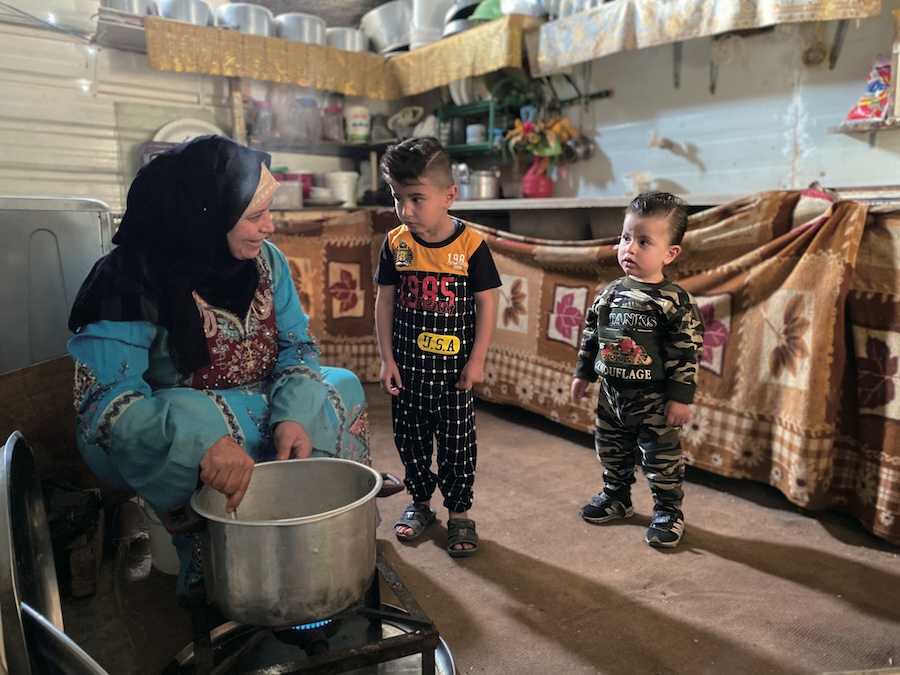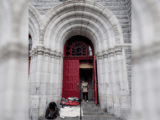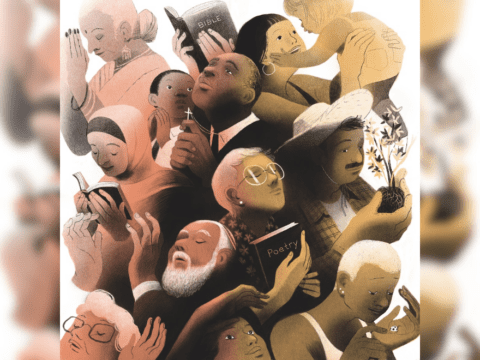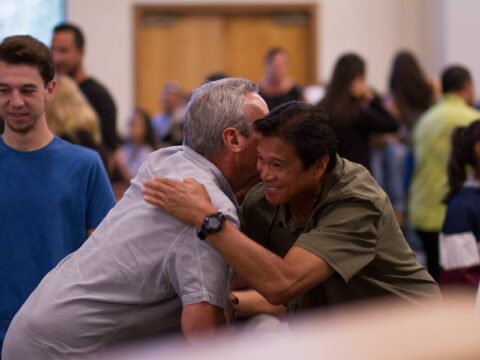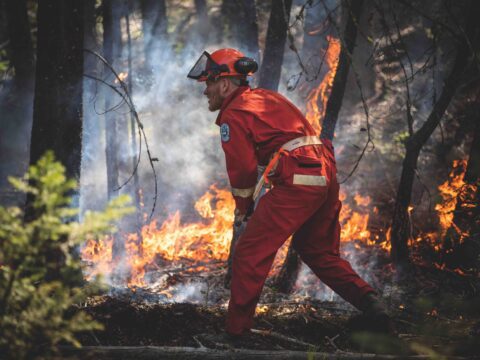What happens when people who have never seen a cookbook get together to write one? That’s exactly what transpired in 2015 at the Zaatari refugee camp in Jordan, when University of Washington professor Karen E. Fisher was put in charge of a community meeting inside a canvas tent in the desert heat.
“Who has pictures of food on their phones?” asked Fisher, a researcher embedded with the United Nations Refugee Agency (UNHCR). Most of the 90 attendees held their mobiles aloft with images of meals made and eaten. Their response confirmed what Fisher already knew: food was an inseparable element of identity for camp residents. The only hitch? No one knew what a recipe was. Or a cookbook. Their culinary expertise lived in their heads and hands, not on paper.
You may unsubscribe from any of our newsletters at any time.
Nine years and almost 300 pages later, the publication of Zaatari: Culinary Traditions of the World’s Largest Syrian Refugee Camp celebrates both the food and the daily lives of the 80,000 displaced residents inside Zaatari.
More than a million Syrian refugees have circulated through the camp since its opening in 2012. “The book documents traditions for the generations that live in the camp and transfers our culture and foods to the world,” says Mohammed Shwamra, a camp resident since 2013 and the book’s project manager. Shwamra interpreted for Fisher at Zaatari and also helped translate the book into English.
With sections on daily routines, religious observances and the life cycles of birth, marriage and death, the book intersperses personal stories with recipes, photographs and illustrations by Zaatari’s artists. What emerges is a comprehensive portrait of the community, where residents continue to “dream of living in [Syria’s] houses, smelling its perfume, and helping it live again,” as a teenage contributor put it.
Documenting life inside the camp was critical to Fisher, who wanted to raise awareness about the refugees’ situation through the cookbook, preserving knowledge and traditions alongside culinary techniques. She and her “2,000 co-authors” recount tales of goat herders, seamstresses, muezzins and bakers in the camp — not to mention a marriage parlour with a hidden beauty salon out back.
Weaving in poetry and stories of libraries, literacy, religious devotion and female empowerment, the book paints a full picture of the world within Zaatari.
More on Broadview:
-
Torn apart from their families, Uyghur exiles look to Canada in hopes of a better life
- Home away from home
When she first arrived in 2015, Fisher was researching how teenage girls used mobile phone technology inside the camp. She wasn’t sure where the adult women were, though: public spaces such as the Shams Élysée, one of two main market streets filled with shops and stalls catering to the needs of the community, are largely male-dominated. In addition, as with other aid workers in the highly controlled camp, she was only allowed to be inside Zaatari from mid-morning to mid-afternoon.
“The women were mostly in their homes doing cooking and laundry, sometimes without water, appliances or electricity,” she says. “It’s a hard life.”
Despite these conditions and the challenges of getting certain food items like olive oil or cheese from their home regions, women managing households in the camp prepare the equivalent of what we might call a Sunday dinner every day, Fisher says. “It’s not unusual to have 20 or more around the table.” Teenage daughters do prep and plating as family sous-chefs for ghada’, the
mid-afternoon meal.
“We often joke that even though we’re in a refugee camp, we eat as if we were at one of the world’s most exclusive restaurants,” says Fisher.
To gain access to the women inside their living quarters (metal caravans that replaced tents around 2015), Fisher asked those teenage girls to be her eyes and ears, providing them with notebooks and instant cameras so they could take photographs and record life in the camp during the hours she couldn’t be there.
The first recipe she received was one for cake, written in English by one of the girls. More recipes, handwritten on heavy linen paper with gold markers, followed, often based on Hourani cuisine of southern Syria, where the vast majority of Zaatari’s residents — and cooks — originate. Along with the increasingly engaged women of the camp, men also contributed recipes. Abu Mahmoud, who sold falafel in Daraa, Syria, before coming to Zaatari, shared the recipe from his falafel shop in the camp, agreed upon as the best among many.
As the cookbook evolved, Fisher and Shwamra worked with small groups of Zaatari’s expert cooks to review and finalize recipes. They standardized descriptions such as “the size of a chicken head” and measurements like “a jar lid.” Quantities were scaled down to render them suitable for four to six diners, rather than for a crowd. The cooks made hard choices about what would be included in the book.
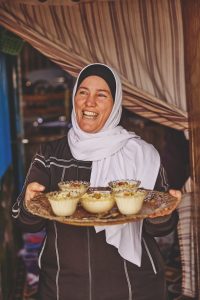
The recipes are accompanied by stories about the cooks and their relationship to the dish. Some offer warm advice to the reader, who might not have the benefit of a beloved mother or grandmother’s wisdom.
For the classic soup shorbat adas, Umm Karam (“Umm” means “mother of” in Arabic) recalls the red lentil rations from the World Food Programme she used when she and her husband initially arrived at the camp in 2013.
Umm Iyad, who shares her recipe for rgagah, a spectacular four- layer pastry with meat and caramelized onions, says the dish is her husband’s favourite: “It reminds him of Syria and brings him much happiness.”
Umm Baraa describes how she makes yabraq, meat-stuffed vine leaves, by tying them in bundles so they handle easier, putting a heavy rock on the lid to aid steaming and serving them warm with labneh (strained yogourt).
And then there’s the revelation that camp residents have a special hand signal for “Come to my house — let’s make kibbeh.” Since there are over 60 kinds of kibbeh — a handmade ground meat specialty — the possibilities for cooking while socializing are endless.
Everything coming into Zaatari, including people, food and books, needs a permit, so there’s a lot of improvisation and substitution in their home cooking. No pistachios for baqlawah, the beloved syrup-soaked pastries? Residents might use peanuts or coconut, coloured green. Fisher, who is originally from Newfoundland, connects with that ingenuity; growing up on the island, she was always fascinated by recipe substitutions. She also relates to the social aspect of cooking (and eating) in the camp. “Where there’s food, where there’s people, that’s where you’ll find me,” she says, laughing.
“My grandparents lived with us and taught me how to cook as they did,” Fisher says, invoking the importance of transmitting culture across generations. With new generations of Zaatari-born children who have never stepped foot in their family’s Syrian homeland, parents and grandparents feel the vital importance of maintaining these traditions.
Fisher wanted to preserve Zaatari residents’ wealth of undocumented expertise and knowledge for posterity. She’s now hoping the cookbook will be published in Arabic, thus serving as a literacy tool for residents young and old who lack access to books.
“It’s incredible how much the people at the camp love looking at the pictures in the book; they feel such a sense of pride,” she says. “Even the children see this as their heritage.”
***
Ivy Lerner-Frank is a writer and former Canadian diplomat. She lives in Montreal.
This story first appeared in Broadview’s July/August 2024 issue with the title “Tastes of Home.”

